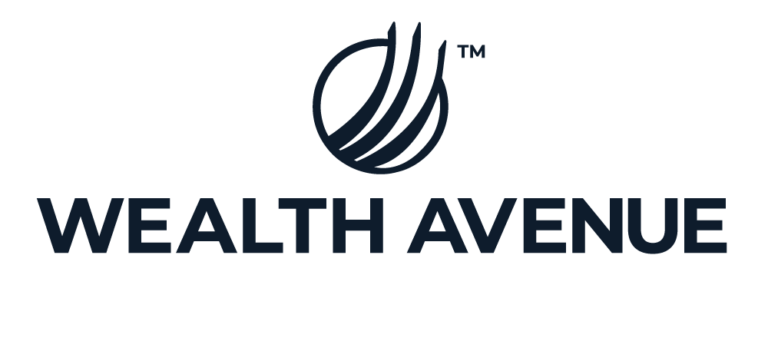
NAVIGATION TIPS
Xerxes Nabong, CFP®, CDFA®
Philip M. Maliniak, CRPC®
Nicole Brown-Griffin, CFP®, CDFA®, EA
Aaron Petty, Client Associate
Hampton Roads: (757) 394-3486
Greater Phoenix: (480) 687-9339
Orange County: (949) 660-8869
10 Key Actions to Take Before December 31st
As October ushers in Halloween, it’s the perfect time to treat yourself to smart financial moves before the year ends. Here are 10 action items to consider to help you make the most of your year-end planning:
1. Max Out Employer-Plan Contributions (401(k), 403(b), TSP)
Contributing the maximum amount to your employersponsored retirement plan, such as a 401(k), 403(b), or TSP, can help reduce your taxable income and grow your retirement savings. For 2024, you can contribute up to $23,000, with an additional $7,500 in catch-up contributions if you’re over 50. If your plan offers a Roth option, take into consideration your current and anticipated future tax status and consider splitting contributions between traditional (tax-deferred) and Roth (tax-free growth) for added flexibility in retirement.
2. Fund Your Roth or Traditional IRA
You can contribute up to $7,000 (or $8,000 for those 50 and older). A Roth IRA offers tax-free growth and withdrawals in retirement, making it an attractive option for those who anticipate being in a higher tax bracket in the future. A Traditional IRA, on the other hand, provides immediate tax deductions but taxed withdrawals in retirement. We can help assess which strategy best suits your long-term financial goals.
3. Charitable Contributions
If you’re planning to donate to charity, make sure your contributions are completed by December 31 to qualify for a tax deduction. Charitable giving not only helps causes you care about, but it can also be a strategic tool for reducing your taxable income, especially if you’re in a higher tax bracket. If you’re not ready to choose a specific charity, consider using a donor-advised fund. This allows you to make a charitable contribution now, receive an immediate tax deduction, and decide on the recipient charities later, offering flexibility in your giving.
4. Tax-Loss Harvesting
If you have investments that have underperformed, consider selling them to realize a loss. These losses can offset gains in other investments and help reduce your capital gains tax. You can also replace the sold investment with a similar fund to maintain diversification in your portfolio. Tax-loss harvesting is a strategic way to lower your tax burden while rebalancing for long-term growth.
5. Maximize Your Health Savings Account (HSA)
HSAs offer triple tax benefits: tax-deductible contributions, tax-free growth, and tax-free withdrawals for qualified medical expenses. You can contribute up to $4,150 for individuals and $8,300 for families in 2024. If you’re eligible, it’s one of the most tax-efficient ways to save for future healthcare costs.
6. Consider a Roth Conversion
Is your income unexpectedly lower this year? If so, you may benefit from converting retirement assets into a taxfree position through a Roth conversion. Additionally, if you make too much to contribute directly to a Roth IRA, a Roth conversion can be a strategic way to take advantage of the tax-free growth that a Roth account offers. It’s important to also consider the income tax rates of the state you plan to move to in retirement, especially if they are higher than where you are now, making the case to consider a Roth conversion. We can discuss if a Roth conversion makes sense for your situation this year.
7. Use Your Flexible Spending Account (FSA)
If you have an FSA, make sure to use your funds before they expire. While some plans allow for a grace period or a carryover of funds, many follow a “use it or lose it” policy, so check when your funds need to be used by to ensure you don’t lose any of your hard-earned dollars.
8. Take Your Required Minimum Distributions (RMDs)
For those aged 73 or older, or if you’ve inherited a retirement account, it’s essential to take your RMDs by December 31 to avoid steep penalties. However, you have the option to satisfy your RMDs through a Qualified Charitable Distribution (QCD). A QCD allows you to donate directly to a qualified charity from your IRA without having the distribution counted as taxable income, making it a tax-efficient way to support causes you care about while fulfilling your RMD requirements. You can donate up to $100,000 per year in this manner, reducing both your taxable income.
9. Review Tax Withholding and Estimated Payments
To avoid surprises during tax season, it’s a good idea to review your tax withholding and ensure that you’re on track. If you’re self-employed or making quarterly tax payments, make sure you’ve paid enough throughout the year to avoid underpayment penalties when you file your taxes next year.
10. Max Fund Both 403(b) and 457 Plans
Do you work for an employer that offers both a 403(b) and a 457 plan? If so, good news! You can contribute the maximum amount to both plans, which means doubling the tax-deferred savings opportunities. Each plan has its own contribution limit, so you can set aside up to $23,000 in each, plus catch-up contributions if you’re over 50. This provides a significant opportunity to boost your retirement savings while reducing taxable income.
Please feel free to reach out if you’d like to discuss any of these strategies further. Our team is here to help ensure you’re making the best decisions for your financial future as we approach the end of the year.
Your Team at Wealth Avenue,






